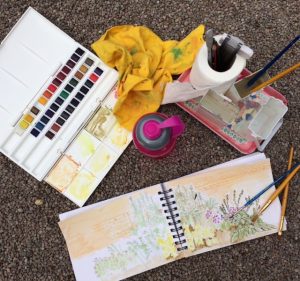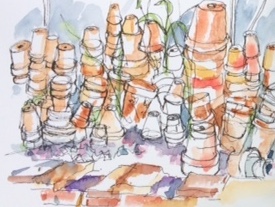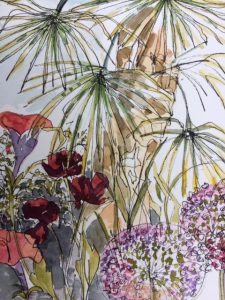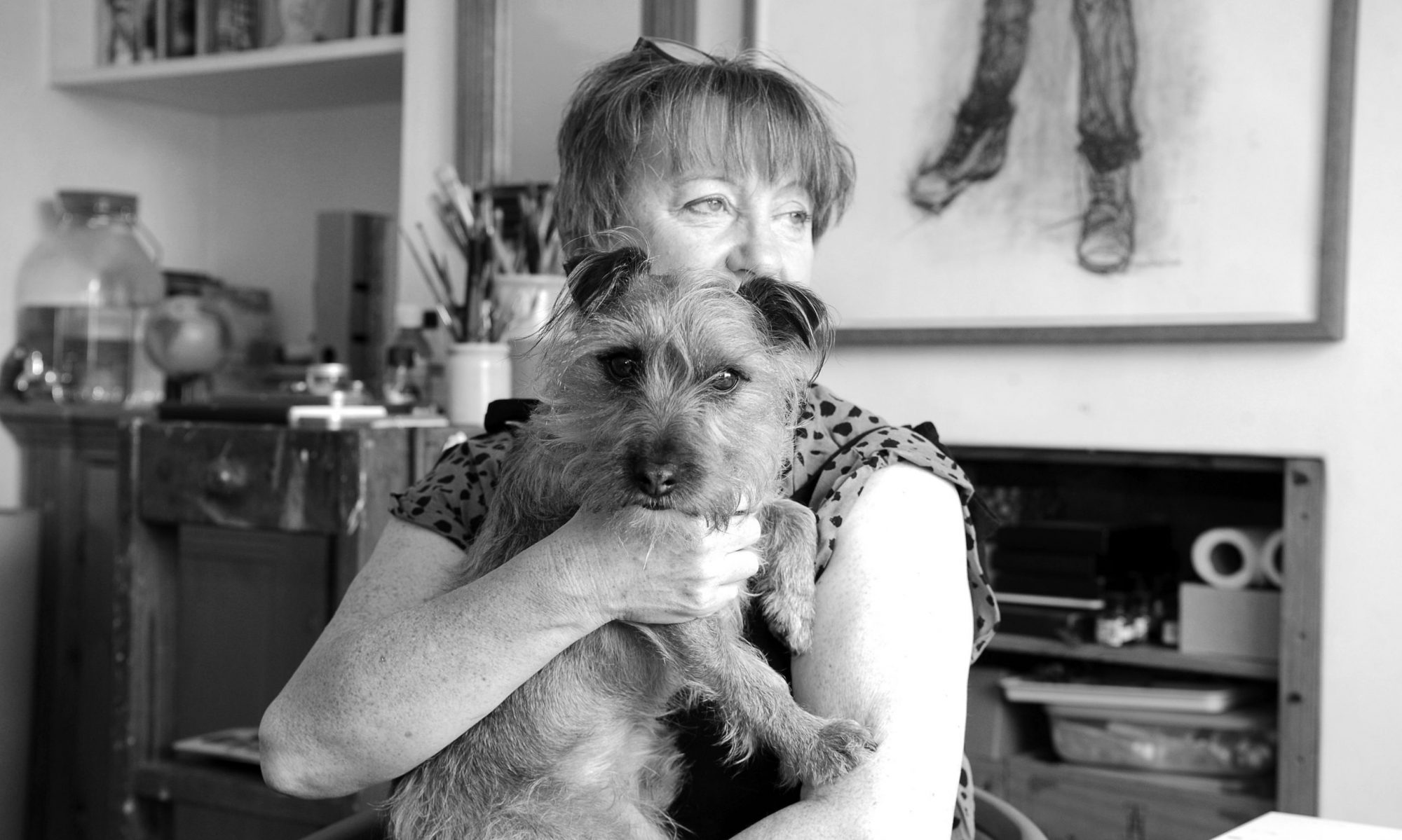
‘What is this life if full of care, we have no time to stand and stare.’ The words of Welsh poet William Henry Davies often come into my mind when I am poised with a pen and a sketchbook. Whether in the midst of a breath taking landscape or the bustle of a busy railway station, sketching in public is all about standing and looking.
We all know the importance of ‘looking’ as an essential part of drawing practice but, unlike the life room, when out doors our concern is for capturing a sense of place with all its interesting intricacies: a moment in time, a smell, a weather condition. As artists we are privileged to be able to leave the exact capturing of detail to the cameraman and indulge ourselves in the recording our own personal response.
I nearly always sketch in pen for the exact reason that you cannot rub it out of fiddle with it. This allows you to become less precious about representational accuracy and allows your sketches to become more responsive, plus you don’t have to carry an eraser. I often use water fast, fine tip liners as I can brush watercolour over the top without the ink running, however, any pen will do – biro gives a lovely quality of line and old fashioned fountain pens will give a line that transforms into beautiful tonal washes with just a touch of water.
Paper wise I generally use a reasonable weight watercolour paper (140lb rough) or a good quality cartridge paper but again don’t miss an opportunity through lack of resource – I have sketches on paper bags, serviettes and till receipts.

Sometimes it can be difficult to find a starting point within the seemingly infinite subject matter that the public domain offers. Choose something that interests you as your central point and work outwards – don’t get bogged down with composition, you can crop or expand it later – it can be a vista or a row of flowerpots. Whilst accuracy is not essential it is still important to look for relationships, angles and negative space and if your picture includes buildings keep the rules of basic perspective in mind.
Put things in or take things out, move things around – remember it is your visual record of a sense of place.

Vary the complexity of the sketch according to circumstances: if you are stood on a headland in driving rain you may want to note a few landmarks, if you sat in the shade on a summer’s day then a detailed sketch may be more fitting.
Remember, sketches don’t have to be finished, although it is a good idea to date and label them. You and others will enjoy looking at them in years to come.
Finally, never be irritated or embarrassed when passers-by want to see what you are doing for it is a pleasure to watch an artist sketch. As artists, we should feel privileged to be in a position to oblige.
The next date for sketching and painting outdoors will be on Saturday 29th June in the beautiful walled gardens at Brockhampton. See courses for further details
